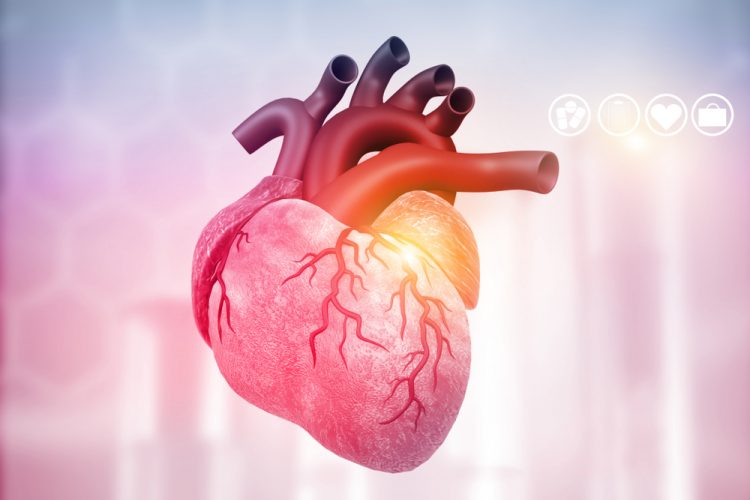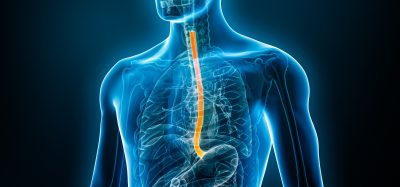Modelling pregestational diabetes-induced congenital heart disease
Posted: 14 February 2024 | Ellen Capon (Drug Target Review) | No comments yet
Using an advanced human heart organoid system, researchers found the contributing factors to the condition and possible therapeutic compounds.


Researchers from the Michigan State University have created an advanced human heart organoid system that models the characteristics of pregestational diabetes-induced congenital heart disease found in mice and humans. The results demonstrated that endoplasmic reticulum (ER) stress and lipid imbalance are essential factors contributing to this disorder, which could be helped with omega-3 exposure.
The most common type of congenital defect in humans is congenital heart disease. Pregestational diabetes, which affects the mother before and during the first trimester, is a significant contributor to congenital heart disease, and presents in a growing population of diabetic female patients of reproductive age. Newborns from mothers with the pregestational diabetes can have a 12-fold increased risk of congenital heart disease, but the condition is difficult to manage clinically because of the sensitivity of the embryo to glucose oscillations.
Previous epidemiological studies have identified pregestational diabetes as a risk factor for other congenital anomalies, like anomalies of the central nervous system (CNS), digestive system, genitourinary system and musculoskeletal system.1
Physiologically relevant studies
Overreliance on animal models is due to the limited access to human tissue for research of the early-stage disease. However, the extent to which rodent models accurately represent abnormalities present in humans is unknown because of the species’ difference in heart size, cardiac physiology, electrophysiology and bioenergetics. Furthermore, rodent models and many in vitro cell models rely on aggressive diabetic conditions, resulting in exaggerated features that may not be clinically relevant.
Senior author of the study Dr Aitor Aguirre of Michigan State University stated: “The new stem cell-based organoid technology employed will enable physiologically relevant studies in humans, allowing us to bypass animal models and obtain more information about relevant disease mechanisms, accelerating drug discovery and medical translation.”
In the study, Dr Aguirre and his colleagues used an advanced heart organoid model which represents human heart development during the first trimester. Derived from human pluripotent stem cells (hPSCs), the model included chamber formation, vascularisation, cardiac tissue organisation and relevant cardiac cell types. The team altered the culture conditions to accurately reflect reported physiological levels of glucose and insulin in patients.
Results
The pregestational diabetes heart organoids (PGDHOs) developed features noted in previous mouse and human studies. The diabetic human heart organoids were larger, indicating cardiac hypertrophy which is the first hallmark of maternal pregestational diabetes. This was confirmed by studying cardiomyocyte size. Also, neonatal rats from diabetic mothers display arrhythmias and a reduction in beat frequency, which was also seen in the PGDHOs.
Single-cell transcriptomic analysis of PGDHOs showed a reduction in cardiomyocyte numbers, a substantial expansion of tissue on the outer surface of the heart, and the absence of a well-developed vasculature at early developmental stages.
Furthermore, the PGDHOs displayed increased accumulation of reactive oxygen species (ROS), showing increased oxidative stress and mitochondrial swelling, which are features of diabetic embryonic heart conditions. A notable portion of ROS was localised to the ER, meaning its function could be impaired and result in ER stress.
When ER stress chronically persists at high levels, an unfolded protein response (UPR) programme ensures cells self-destruct. As well as in diabetes, chronic ER stress and UPR signalling defects are emerging as key contributors to human diseases like neurodegeneration and cancer.2
Furthermore, the PGDHOs revealed an imbalance in very long chain fatty acids, especially affecting omega-3 polyunsaturated fatty acids, which are mostly synthesised in the ER. These findings indicate a large ER-induced lipid imbalance in PGDHOs. This imbalance is linked to the degradation of a lipid biosynthesis enzyme present in the ER named fatty acid desaturase 2 (FADS2), by the IRE1-dependent mRNA decay (RIDD) pathway. This pathway is implicated in multiple other cardiac conditions.
The researchers, to remedy the effects of ER stress, tested several potentially therapeutic compounds on PGDHOs. A mixture of omega-3 fatty acids ameliorated diabetic features, while targeting inositol-requiring enzyme 1 (IRE1) reduced cardiomyocyte hypertrophy. All the compounds restored FADS2 levels.
Dr Aguirre cautioned: “The organoids still lack some features that could be important, such as external vascularisation and outflow tract, and better chamber formation, so we might still be missing important aspects of congenital heart disease and diabetic cardiomyopathy.”
He concluded: “On one hand, we want to partner with clinicians to establish the efficacy and safety of our findings in pregnant women. On the other hand, we want to apply our organoid model to other conditions affecting congenital heart disease so we can improve the lives of these children in the future.”
This study was published in Stem Cell Reports.
References
1 Bao W, Du Y, Liu B, et al. Association of Maternal Prepregnancy Diabetes and Gestational Diabetes Mellitus With Congenital Anomalies of the Newborn. Diabetes Care. [Internet] 2020 October 21 [2024 February 9];43(12):2983-90. Available from: https://doi.org/10.2337/dc20-0261
2 Oakes SA, Papa FR. The Role of Endoplasmic Reticulum Stress in Human Pathology. Annual Review of Pathology: Mechanisms of Disease. [Internet] 2014 October 27 [2024 February 9];10:173-94. Available from: https://www.annualreviews.org/doi/abs/10.1146/annurev-pathol-012513-104649
Related conditions
Congenital heart disease, pregestational diabetes
Related organisations
Michigan State University
Related people
Dr Aitor Aguirre (Michigan State University)







